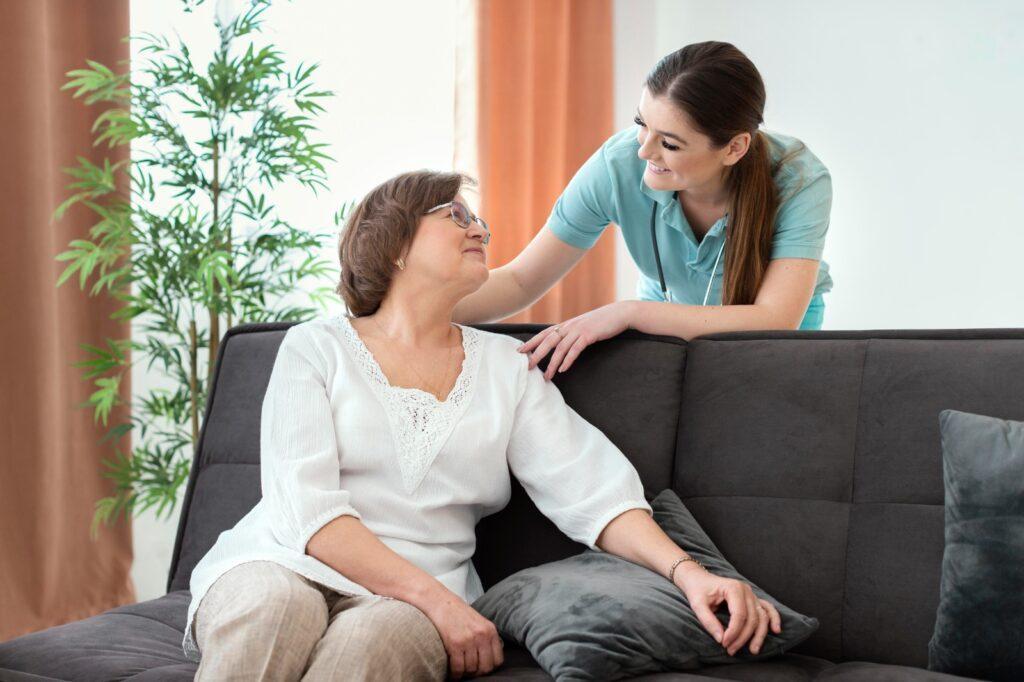

In recent years, there has been a growing trend towards providing patient care at home. This approach offers numerous benefits, including increased patient comfort, reduced healthcare costs, and improved health outcomes. Patient care at home allows individuals to receive personalized and comprehensive care in the familiar and supportive environment of their own homes. This article serves as an essential guide to patient care at home, outlining the key considerations and strategies to ensure optimal comfort, safety, and well-being for patients.
1. Understanding Patient Care at Home
Patient care at home involves the delivery of medical and non-medical services to individuals who require assistance or treatment but prefer to receive it in their own residences. It encompasses a wide range of healthcare services, from simple activities of daily living support to complex medical treatments. Patient care at home aims to promote healing, independence, and overall well-being while ensuring a high standard of care.
2. Creating a Safe and Comfortable Environment
One of the crucial aspects of patient care at home is establishing a safe and comfortable environment. Healthcare providers must conduct thorough assessments of the patient’s living space to identify potential hazards and implement appropriate interventions. This includes evaluating home accessibility, eliminating fall risks, and ensuring the availability of necessary medical equipment. Additionally, creating a comfortable environment involves considering factors such as temperature control, lighting, noise levels, and privacy.
3. Comprehensive Assessment and Care Planning
Before initiating patient care at home, healthcare professionals must conduct comprehensive assessments to understand the patient’s specific needs. This includes evaluating their medical condition, functional limitations, cognitive abilities, and social support systems. Based on this assessment, an individualized care plan can be developed, addressing various aspects of care, such as medication management, wound care, mobility assistance, and emotional support.
4. Skilled and Compassionate Caregivers
The quality of patient care at home heavily relies on the expertise and compassion of caregivers. Skilled healthcare professionals, such as nurses, therapists, and aides, play a crucial role in managing the patient’s medical conditions, providing treatments, and ensuring proper medication administration. Moreover, compassionate care is essential for building trust and establishing a supportive relationship with the patient and their family members.
5. Effective Communication and Collaboration
Clear and efficient communication is vital for successful patient care at home. Open lines of communication among healthcare providers, patients, and their families enable the exchange of important medical information, facilitate care coordination, and address any concerns or questions. Collaboration among the multidisciplinary team ensures seamless transitions of care, prevents gaps in services, and promotes a holistic approach to patient care.
6. Patient and Family Education
Patient and family education is a fundamental aspect of patient care at home. Healthcare providers should provide comprehensive information to patients and their families about their medical condition, treatment plans, medication management, and self-care techniques. This education empowers patients to actively participate in their own care, enhances their understanding of their condition, and promotes adherence to treatment regimens.
7. Ongoing Monitoring and Evaluation
Continuous monitoring and evaluation are essential components of patient care at home. Regular assessments of vital signs, symptom management, and treatment effectiveness allow healthcare providers to track the patient’s progress and make necessary adjustments to the care plan. Additionally, collecting patient feedback and conducting satisfaction surveys can help identify areas for improvement and enhance the overall quality of care.
8. Emotional and Psychosocial Support
Patient care at home extends beyond the physical aspects ofcare and also includes emotional and psychosocial support. Healthcare providers should recognize the emotional and psychological needs of patients and provide appropriate support. This can involve active listening, empathy, and creating a safe space for patients to express their concerns and emotions. Additionally, connecting patients with support groups or counseling services can help address any psychological or emotional challenges they may face.
9. Ensuring Medication Safety and Adherence (Word Count: 300 words)
Proper medication management is crucial in patient care at home. Healthcare providers should educate patients and their caregivers about medication safety, including proper storage, dosage instructions, and potential side effects. Implementing strategies such as medication organizers, reminders, and regular medication reviews can help enhance medication adherence and reduce the risk of errors.
10. Emergency Preparedness
Being prepared for emergencies is essential in patient care at home. Healthcare providers should work with patients and their families to develop an emergency plan that includes contact information for healthcare providers, emergency services, and nearby hospitals. Additionally, providing education on recognizing warning signs and knowing when to seek immediate medical attention can help prevent complications and ensure timely interventions.
11. Home-Based Rehabilitation and Therapy (Word Count: 300 words)
For patients requiring rehabilitation or therapy services, incorporating home-based programs can be highly beneficial. Physical therapy, occupational therapy, and speech therapy can be provided in the comfort of the patient’s home, promoting recovery and functional independence. Healthcare providers should assess the patient’s needs and develop personalized therapy plans to optimize their physical and cognitive abilities.
Conclusion
Patient care at home offers a valuable alternative to traditional healthcare settings, enabling individuals to receive personalized care in the familiar surroundings of their own homes. By focusing on creating a safe and comfortable environment, conducting comprehensive assessments, employing skilled and compassionate caregivers, promoting effective communication and collaboration, and ensuring ongoing monitoring and evaluation, healthcare providers can ensure optimal patient care at home. Patient and family education, emotional and psychosocial support, medication safety, emergency preparedness, and home-based rehabilitation are vital aspects that contribute to the overall well-being and positive outcomes of patients. As the demand for patient care at home continues to rise, it is crucial for healthcare systems and policymakers to invest in resources, training, and infrastructure to support this model of care. By prioritizing patient-centered care delivery at home, we can enhance patient satisfaction, improve health outcomes, and reduce healthcare costs while ensuring the comfort, safety, and well-being of patients.
